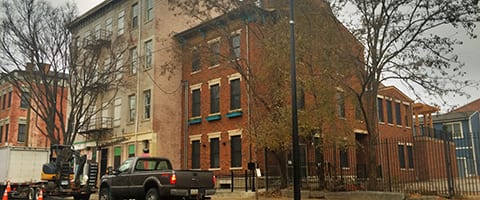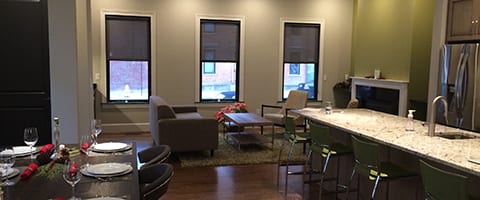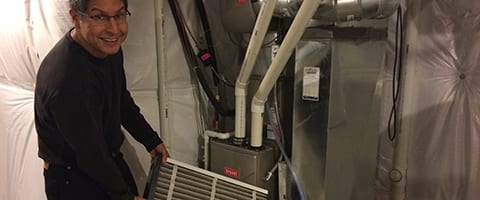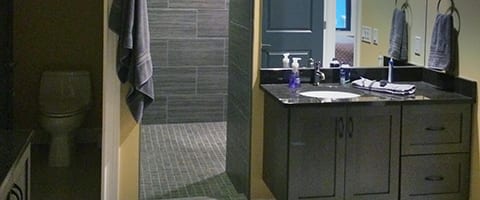SITE

January 2015 – This Over-The-Rhine home has applied for the City of Cincinnati’s CRA Tax Abatement which is an enhancement incentive when the building reaches the U.S. Green Building Council’s Leadership in Energy and Environmental Design (LEED) Certification. They should save about $40,000 over the additional five year period of the tax savings, easily paying for the approximate $6,000 in higher performance materials, systems and LEED fees.
The Gaitan Residence is a perfect example of the advantages of optimizing site location. It is within walking distance of at least 28 community services such as restaurants, churches, child care, senior centers, health care, grocery stores and banks. With it’s placement on Cincinnati’s new street car line it has public transportation options close to those in Chicago or New York City. Paul Gaitan’s decision to build in Over-The-Rhine means new infrastructure such a water lines, roads and electrical service didn’t have to be built, saving valuable farm land from development if he had decided to build on a greenfield site. The home also received points for building on a lot of 1/7 acre or less. And to help Paul understand how to operate and maintain his new home, John Heuber Homes will provide an Operations and Training Manual as well as a one hour walkthrough of basic operations. And LEED homes receive a third party inspection, in Paul’s case it was provided by Paul Yankie, Provider QAD, and Dave Horton, Green Rater, of Green Building Consulting. It may seem obvious but LEED doesn’t allow building in a 100-year flood plain, habitat for threatened or endangered species, public parkland or prime farmland soils.
MATERIAL RESOURCES

The great room on the first floor takes advantage of the wider lot on the west side. By combining living and dining with the kitchen and entrance to home feels large and inviting as you enter. LEED places special attention to the durability of the home. By durability the US Green Building Council means: non-paper backer board in tub, shower and spa areas; no carpet in kitchen, bathroom, laundry and spa areas; no carpet within 3 ft of each entryway, drain and drain pans in hot water heaters, clothes washers/dryers in/over living areas; and exhaust clothes dryers to outdoors.
LEED projects encourage sourcing materials from within 500 miles, including recycled and rapidly renewable content. Rapidly renewable means the materials such as bamboo or cork is grown and harvested within 10 years. In the Gaitan residence, Paul chose cork sub-flooring to help deaden the sound between floors. And to top it off, builder Marc Heuber of John Heuber Homes suggested a local wood floor boards. With LEED for homes both the contractor and the U.S. Green Building Council consultant work together to be sure the home earns the LEED points needed to meet the goals of the project. John Heuber Homes built the first LEED home in Cincinnati and has a lot of experience building in Over-The-Rhine both in renovation and new construction. Finishing off the building materials includes paints, caulks, stains and urethanes. To meet Leadership in Energy and Environmental Design (LEED) requirements Marc chose low Volatile Organic Content (VOC) coatings and sealants. In other words, you could be in the home while painting was being done and not smell anything. Architect Darren Myers of Kenneth Bowman, Inc. along with Sue Gates with John Heuber Homes worked as a team to meet Paul’s needs for contemporary design while meeting the needs of the sustainability goals, the home is targeting LEED Silver. LEED homes even address non-toxic pest control by sealing external cracks, joints, etc. with caulking and installing pest proof screens, they contain no wood-to-concrete connections and use solid concrete foundation walls.
ENERGY EFFICIENCY

Owner Paul Gaitan wasn’t aware of the LEED Home tax abatement offered by the City of Cincinnati when he started but with the help of John Heuber Homes and the U.S. Green Building Councils’ local Green Rater Green Building Consulting he quickly learned and now has become quite the spokesperson for the advantages of a higher performance home.
Besides super insulation and very tight air sealing, the Gaitan Residence uses a typical Green home HVAC technic, two smaller HVAC systems. This allows the individual units to work at their maximum efficiency when needed and not waste efficiency on one larger unit by running it to only heat or cool only a fraction of the interior space. One unit in in the basement for the first and second floor. The other unit heats and cool the third floor. The home also features thicker MERV 13 air filters. These filters are four inches thick rather than the typical one inch filters. Green homes encourage keeping the dirt out with entry way walk off mats, isolating household chemicals and much finer resolution air filtering.
Paul’s home has received a 52 HERS Index. The Home Energy Rating System (HERS) Index is the industry standard by which a home’s energy efficiency is measured. It’s also the nationally recognized system for inspecting and calculating a home’s energy performance. The HERS Index measures a home’s energy efficiency and there are a lot of great reasons to have a home energy rating performed on your house. It can tell you so much about the home you live in, like how efficiently it’s operating and where you can make modifications for greater energy savings. When you’re selling your home, a low HERS Index Score can command a higher resale price. And when you’re buying a home you can anticipate the costs of energy bills and efficiency upgrades. The U.S. Department of Energy has determined that a typical resale home scores 130 on the HERS Index while a standard new home is awarded a rating of 100. A home with a HERS Index Score of 52 is 48% more energy efficient than a standard new home.
WATER EFFICIENCY

Paul’s contemporary design perspective is apparent in the master bath with it’s use of textures and finishes. Gaitan credits John Hueber Homes’ interior designer Sue Gates with nailing the modern interior.
Cincinnati has some unique reasons to save water and use less of it to flush sewage, it’s an older city whose initial storm water conveyance system was designed to prevent hillside collapse because of extreme rainfall events. Later in it’s history it was used to convey sewage and because it’s a combined stormwater and sewage system sometimes it can’t handle a multi inch storm event and flows right into the Ohio River without treatment. The EPA has required the city to reduce those occurrences and that’s increased the cost of water and it’s associated sewage services. Green homes use less water to start and less water to convey the sewage. It’s this 20 to 30 percent less water use combined with sometimes 50 percent less sewage conveyance that reduces the water and sewage bill.
The average flow rate for all showers is less than or equal 2 gpm. The average flow rate for lavatory faucets is less than or equal 1.5 gpm. The Energy Star labeled bathroom exhaust fans exhaust outdoors and meet ASHRAE Std. 62.2 air flow requirements.
AWARENESS AND EDUCATION
The efforts on behalf of this project by the Green Living Member Circle of the local Chapter of the U.S. Green Building Council help meet the requirements for public awareness by offering public relations in encouraging Brent Coleman of Channel Nine to write an article on the home, creating this website about the features and benefits of LEED homes and making it a part of the 2015 Green Home Tour program. For more information about future tours go to https://green-cincinnati.com/2015-green-home-tour-schedule/ or contact Chair Chuck Lohre, [email protected], 513-260-9025.
Report on the event Jan 17, 2015.
(12-12-19 redirected from lohre.com)
